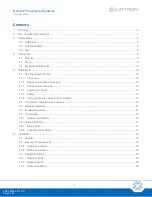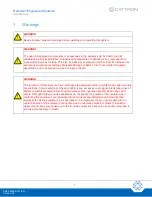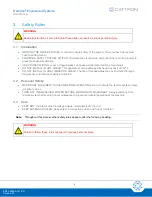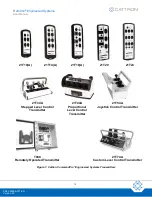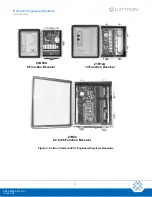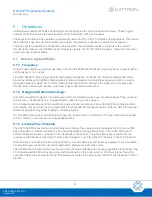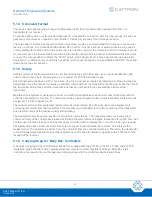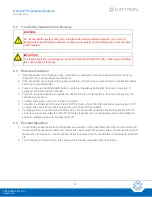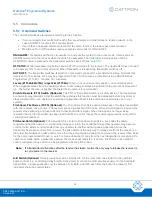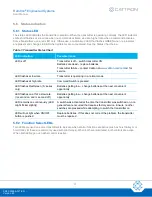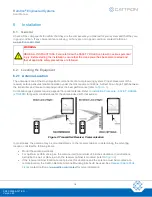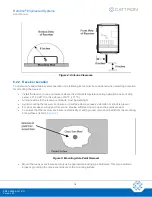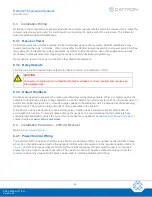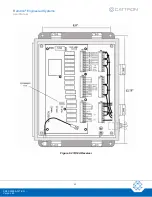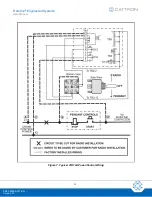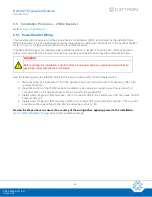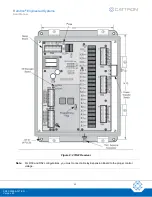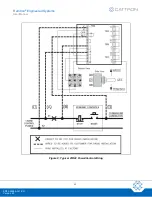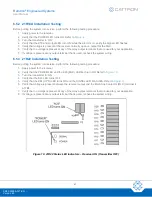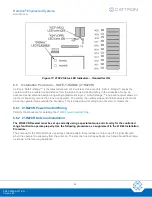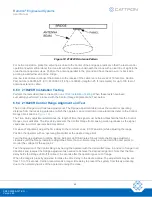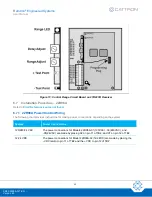
Remtron
®
Engineered Systems
User Manual
15
9M02-9028-A021-EN
Version 4.0
5.5
Commands
5.5.1 Command Switches
The command switches are labeled according to their function.
•
If two commands that conflict with each other are attempted, in most cases no function results. In the
case of ON/OFF functions, OFF predominates
•
If more than one speed command is sent for the same function, the lower speed predominates
•
Maintained On or Off functions require separate commands for ON and OFF
ON/ALARM
:
This button switches the transmitter on and puts the system in the active mode. It also sends an
ALARM command to the receiver while the switch is depressed. The transmitter remains active until the
OFF/STOP button is pressed or the transmitter switches itself off (see
OFF/STOP
:
While depressed, this button sends a STOP command to the receiver. The transmitter does not need
to be actively ‘ON’ to send this command. When this switch is released, the transmitter switches off.
AUTO OFF
:
The transmitter switches itself off if no commands are sent for a predetermined time. Normally this
time is set to 15 minutes, but it may be programmed from 0 to 60 minutes, or disabled using a RAC16 Series
Programmer (01 to 60 = minutes, 00 = disabled).
Levers (21T34A/44A/74A) / Joysticks (21T54A)
:
When in the neutral (center) position, no commands send.
When a paddle moves from the neutral position, a command generates proportional to the amount of movement
(i.e., the further the lever is pushed, the faster the movement is commanded).
Push-to-Operate (PTO) Switch (Optional)
:
The PTO or ‘Dead Man Switch’ is a safety device. The transmitters
are normally programmed so that the switch that activates this function must be depressed before any motor or
other critical function can operate (consult the Configuration Sheet if this switch has an alternate use in your
system).
First-Come First-Serve (FCFS) (Optional)
:
The First-Come First-Serve option allows use of multiple transmitters
with one receiver, one at a time. The receiver scans a preset list of ID Codes. When a valid signal is received, the
receiver stops scanning and responds only to that transmitter’s signal. When the signal is no longer being
received (that is, the transmitter has been switched off or is out of range), the receiver again scans until another
valid signal is received.
Pitch-and-Catch (Optional)
:
Pitch-and-Catch is similar to First-Come First-Serve, but it adds the safety
requirement that the operator in control must release or ‘pitch’ the control before another operator may assume
control. It also allows control transfer from one operator to another without pausing operation. Once the
transmitter has taken control of the receiver, the pitch button is the only way to release control of the receiver so
that other transmitters can take control. Once the receiver receives a valid pitch command, the receiver then looks
for the next programmed ID code. A
‘catch’ is made when the ID code from the next transmitter is recognized. If a
catch is not made within a preset time period, the receiver will revert to First-Come First-Serve until a valid ID
code is recognized. Any switch can be programmed as the pitch button.
Note:
If a transmitter malfunctions after the receiver has taken control, the only way to release the receiver is
to cycle power to the receiver.
A-B Switch (Optional)
:
Selector switches can be provided to control more than one similar function with the
same controls (i.e., controlling trolley/hoist A, trolley/hoist B, or both A and B simultaneously). On the handheld
transmitters, a single pushbutton cycles between A, B, Both, and OFF each time the button is pressed. LED
indicators show the control status.



